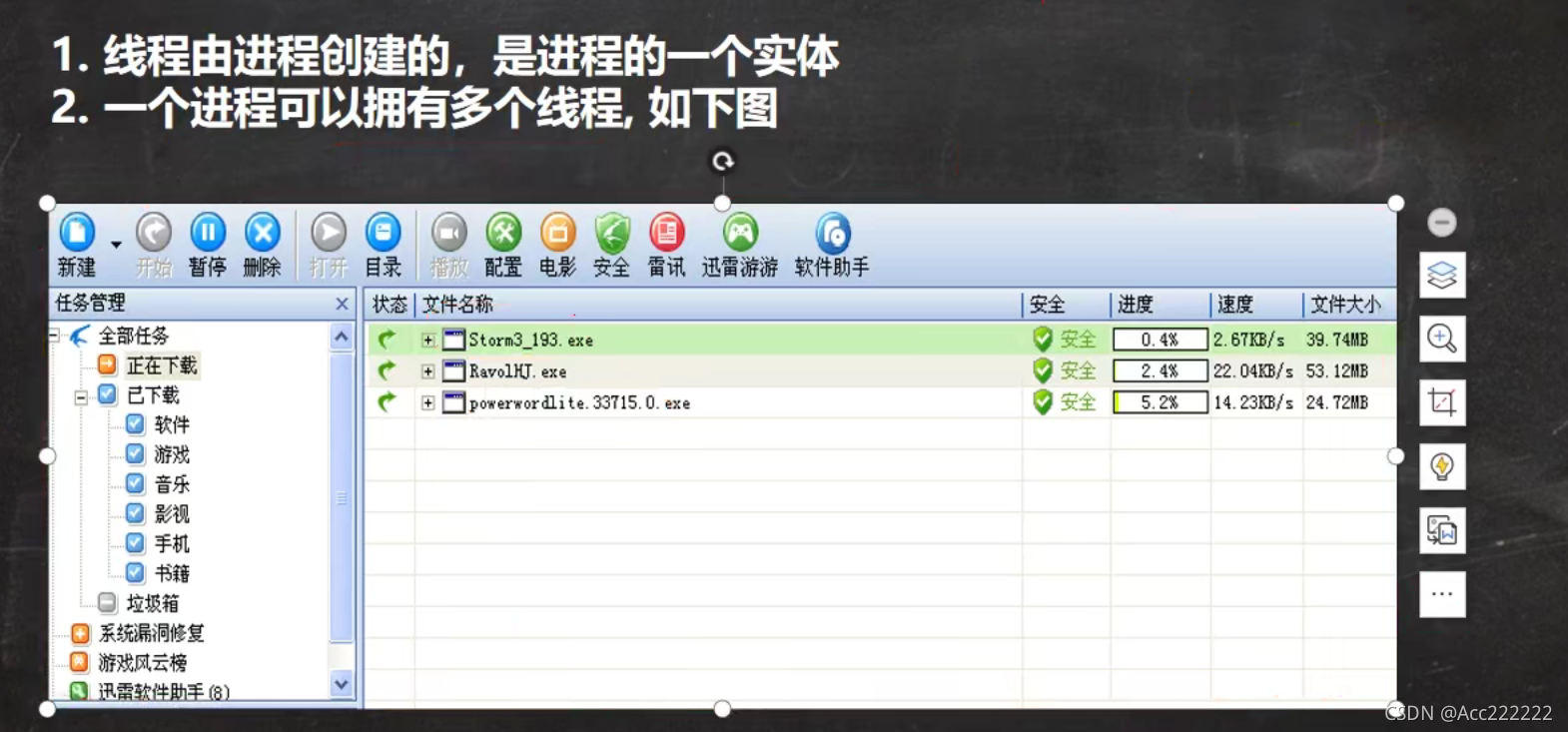线程相关概念
程序
是为了完成特定任务,用某种语言编写的一组指令的集合。简单地说:就是我们写的代码。
进程
线程
其它
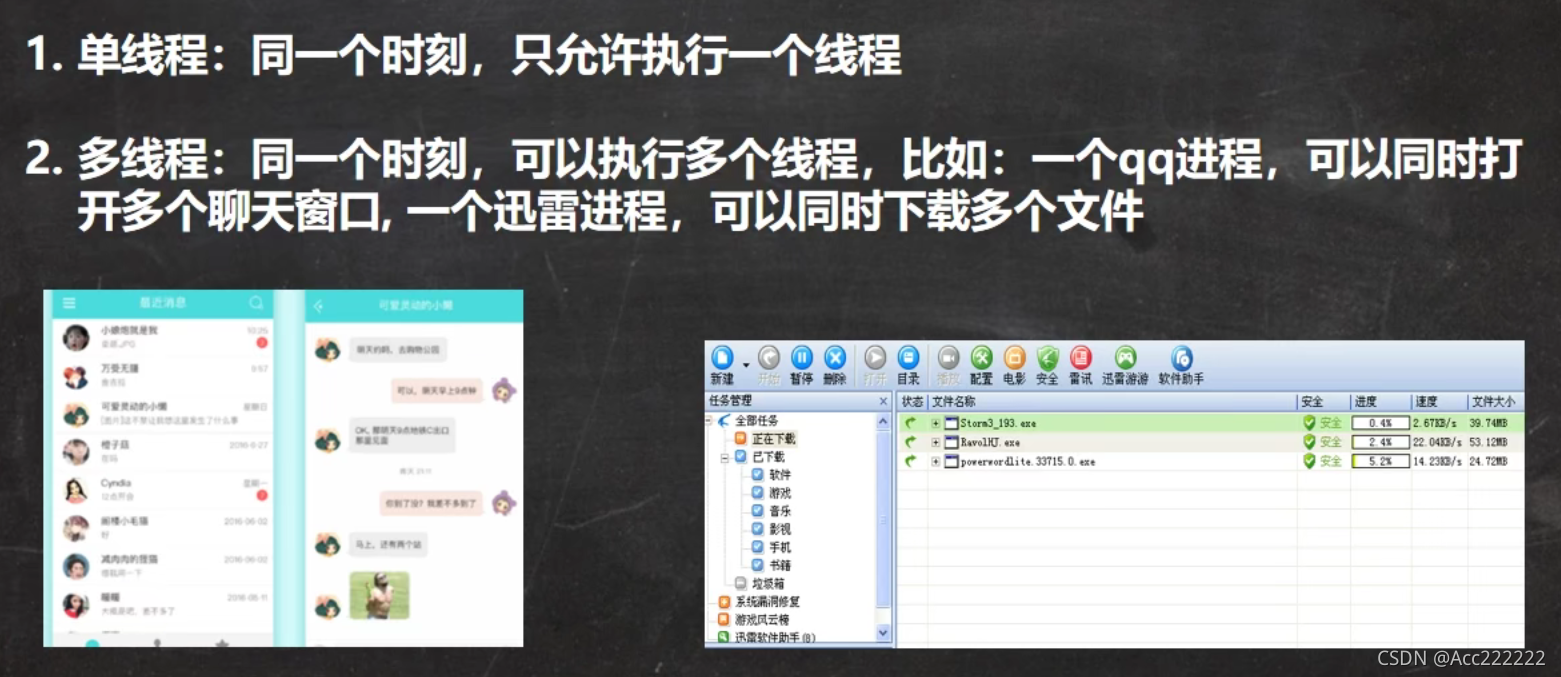
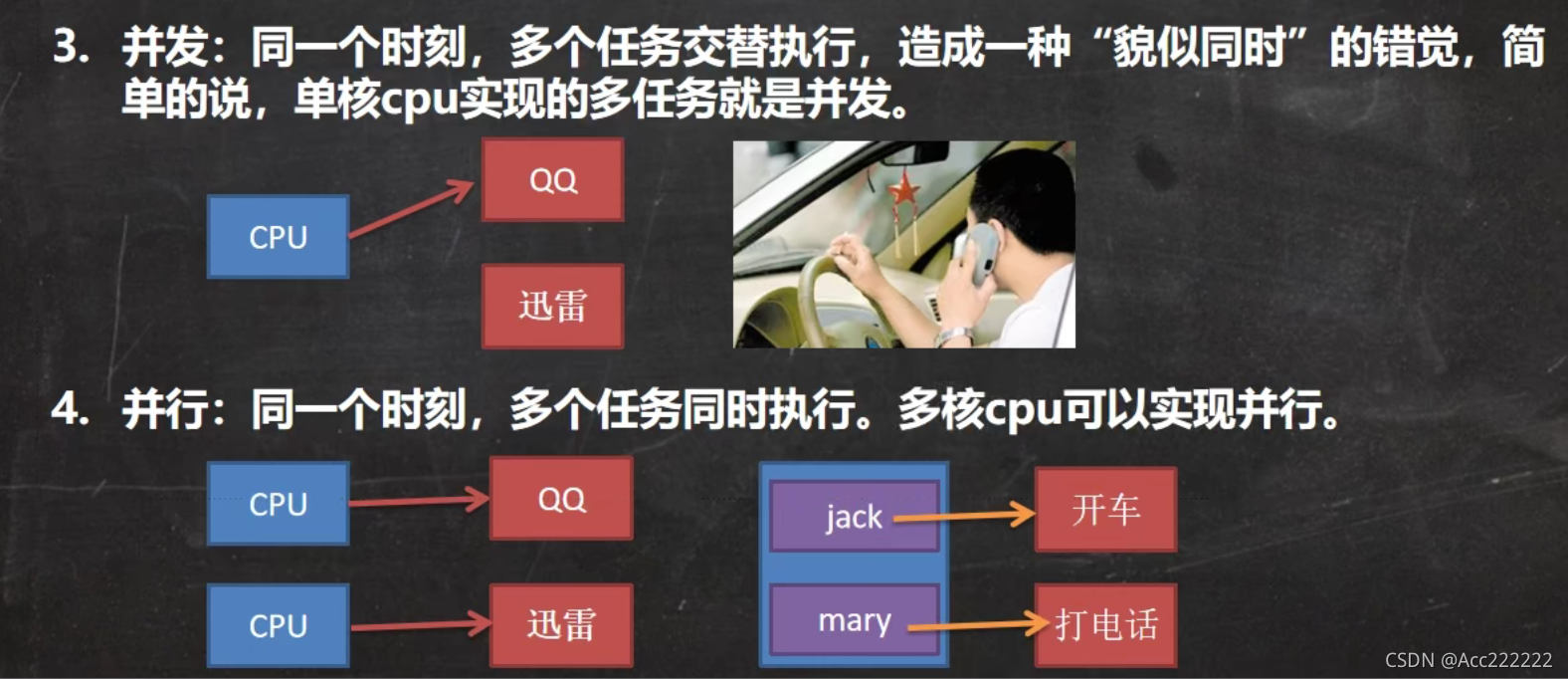
public static void main(String[] args) {Runtime runtime = Runtime.getRuntime(); //获取当前电脑的cpu数量int cpuNums = runtime.availableProcessors();System.out.println(cpuNums);}
线程基本使用
创建线程的两种方式
1. 继承Thread 类,重写 run方法。
当一个类继承了 Thread 类,该类就可以当作线程使用。Thread类实现了 Runnable接口的run方法,我们会重写run,写上自己的业务代码。 下面是Thread类的run方法: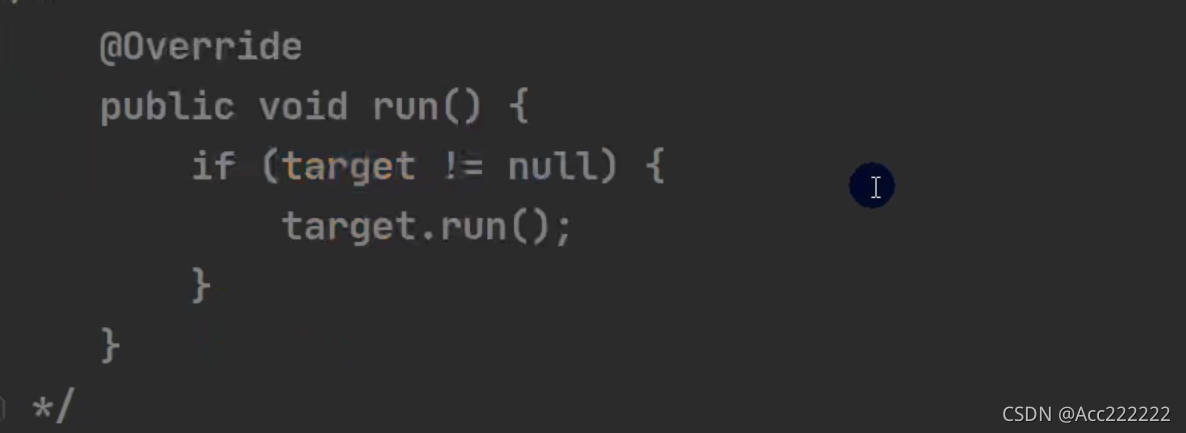
class AA extends Thread{@Overridepublic void run() { //重写run方法while(true){System.out.println("线程进行中");try{//线程每输出一次,休眠一秒(不用try-catch会报异常)Thread.sleep(1000);}catch (InterruptedException e){e.printStackTrace();}}}}
public static void main(String[] args) throws InterruptedException { //main线程AA aa = new AA();aa.start(); //启动子线程 Thread-0 下面会解释为什么不调用run//说明:当main线程启动一个子线程 Thread-0,主线程不会阻塞,会继续执行。//这时,主线程和子线程是交替进行的System.out.println("主线程继续执行" + Thread.currentThread().getName());//获取线程名for(int i=0;i<10;i++){System.out.println("主线程" + i);Thread.sleep(1000); //alt + enter可以抛出异常}}

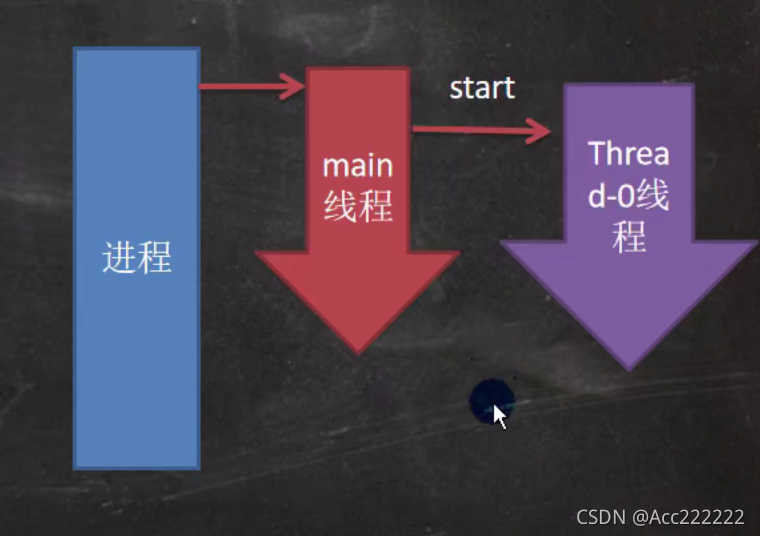 注:子线程也可以开启另一个子线程。
注:子线程也可以开启另一个子线程。
这里有一个值得注意的问题:AA类重写的是run方法,但是在main中调用的却是start,这是为什么呢? 因为只有start方法才能启动线程,进而执行AA类的run方法。这时main和Thread-0是同步执行的。 如果调用run方法,这就是一个普通的方法,没有真正启动一个线程,因此会把run方法执行完再执行下面的内容,造成阻塞。
start会调用一个start0方法(这才是启动线程的方法),下面是start的流程图。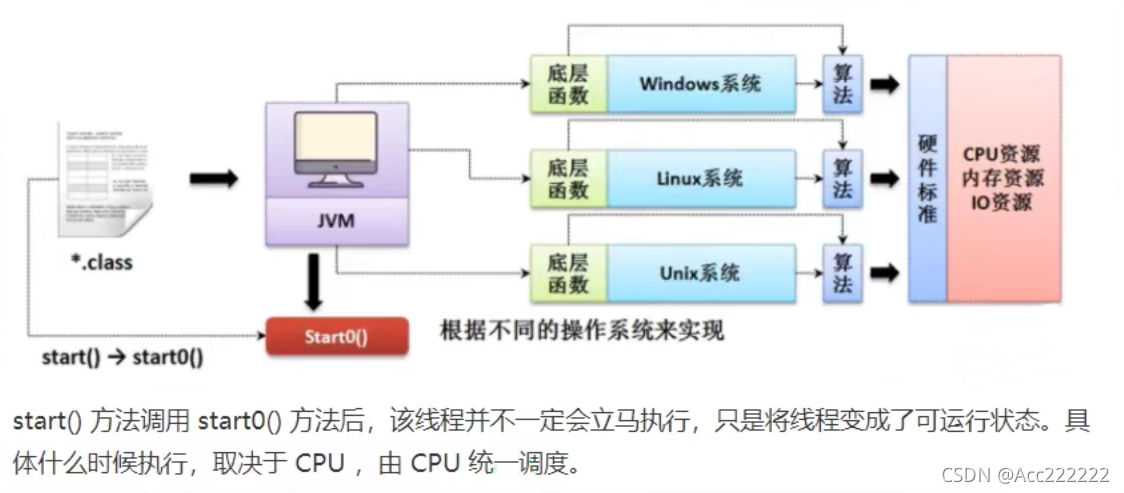
2. Runnable创造线程
当一个类已经有继承的父类时,就不能再继承Thread类了,这时可以实现Runnable接口来创造一个线程。
3. 当有多个线程共享资源时,一般用Runnable创造线程。 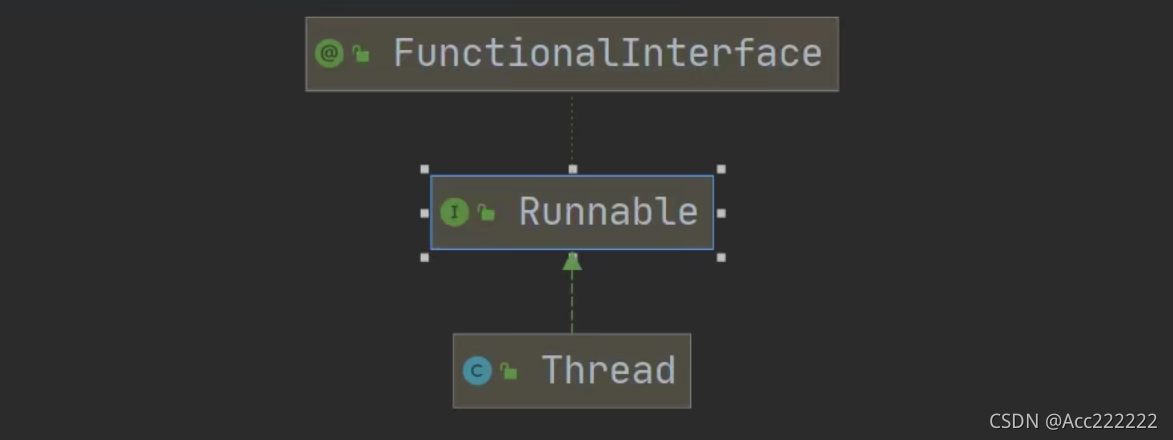
class AA implements Runnable{@Overridepublic void run() {while(true){System.out.println("线程进行中");try{//线程每输出一次,休眠一秒(不用try-catch会报异常)Thread.sleep(1000);}catch (InterruptedException e){e.printStackTrace();}}}}
public static void main(String[] args) throws InterruptedException {AA aa = new AA();//aa.strat(); 报错,因为没有继承Thread,不能直接调用start。Thread thread1 = new Thread(aa);//创建一个Thread,把类放入Thread thread2 = new Thread(aa);//多个资源共享线程(同一个对象创造多个线程)thread1.start();thread2.start();}
模拟Thread类:
class ThreadProxy implements Runnable{private Runnable target = null; //类型是Runnable@Overridepublic void run() {if(target!=null){target.run();}}public ThreadProxy(Runnable target) {this.target = target;}public void start(){start0();}public void start0(){run();}}
JConsole
这个工具可以监控线程执行情况。
1. 运行main线程,然后打开Terminal(左下角),然后输入 JConsole(不区分大小写)打开工具。
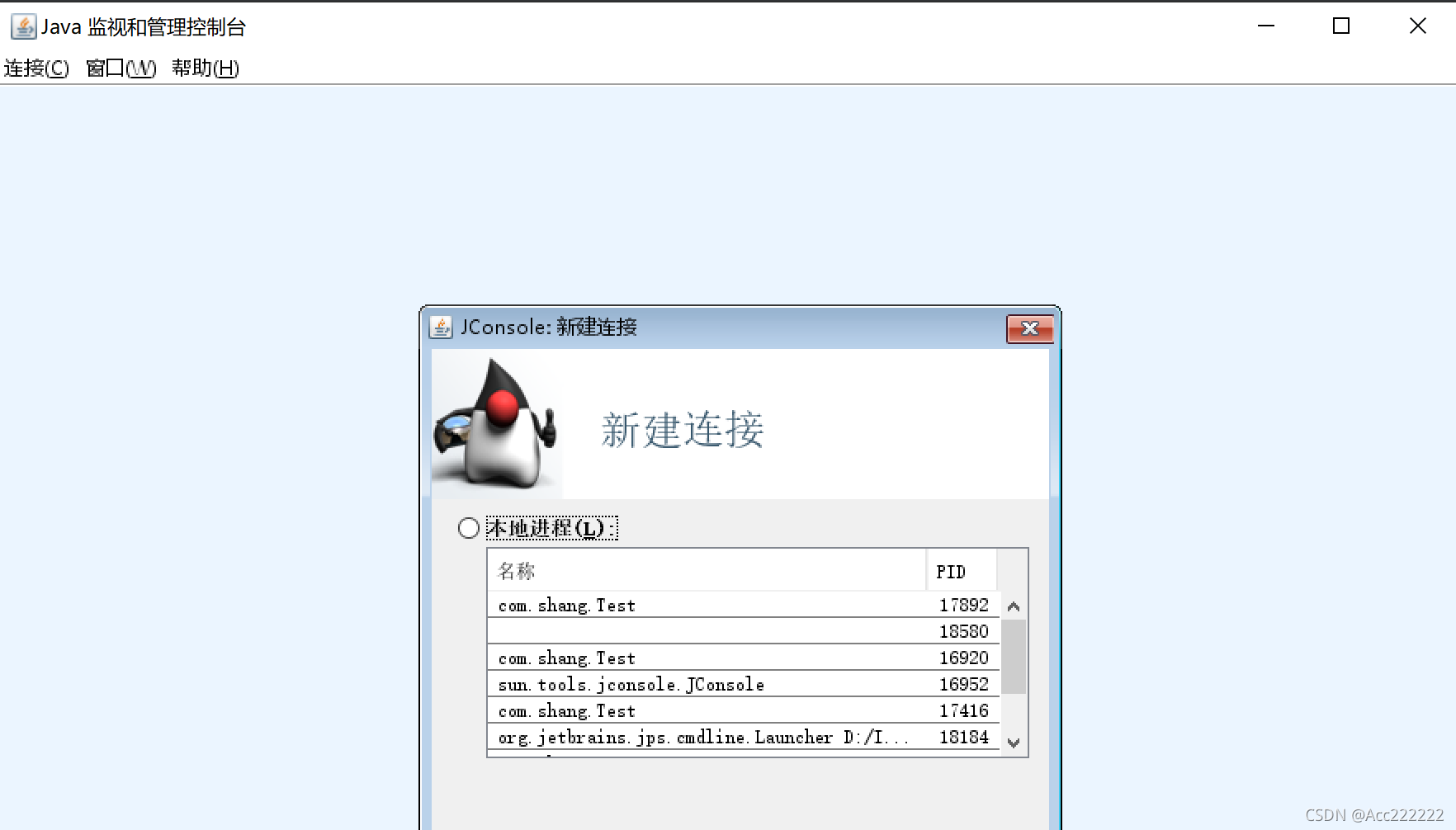
2. 选择对应类的本地进程(可能有好多个,选第一个就行了)。
3. 选择不安全的连接。 
4. 这样可以看到,有main线程与Thread-0线程。 
对线程的理解
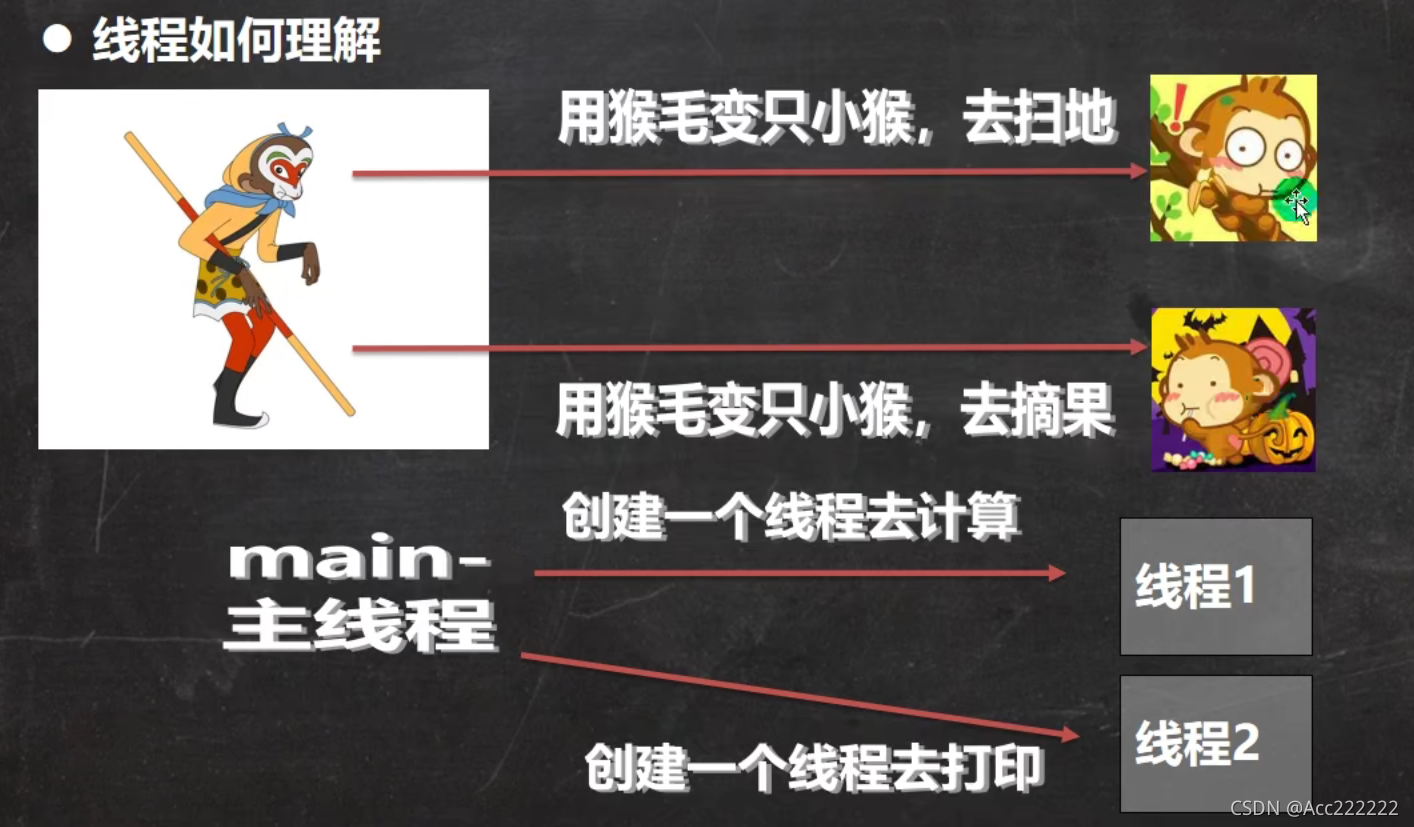

P587:经典多线程售票问题。到最后会出现票剩-2张等情况。这是因为各线程在判断是否票数为0时,基本上是同时判断的,因此可能票有1张,有三个线程,都认为票没卖完,又出售了三张,导致最后剩-2张。
线程终止

所谓使用变量,其实就是用变量控制run方法的循环(比如t = true),然后在main方法中对其进行修改。
class AA implements Runnable{private boolean loop = true; //控制run的进行@Overridepublic void run() {while(loop){System.out.println("青眼白龙");try {Thread.sleep(1000);} catch (InterruptedException e) {e.printStackTrace();}}}public void setLoop(boolean loop) { //loop的Setter的方法this.loop = loop;}}
线程常用方法
注:这些都是Thread类的方法。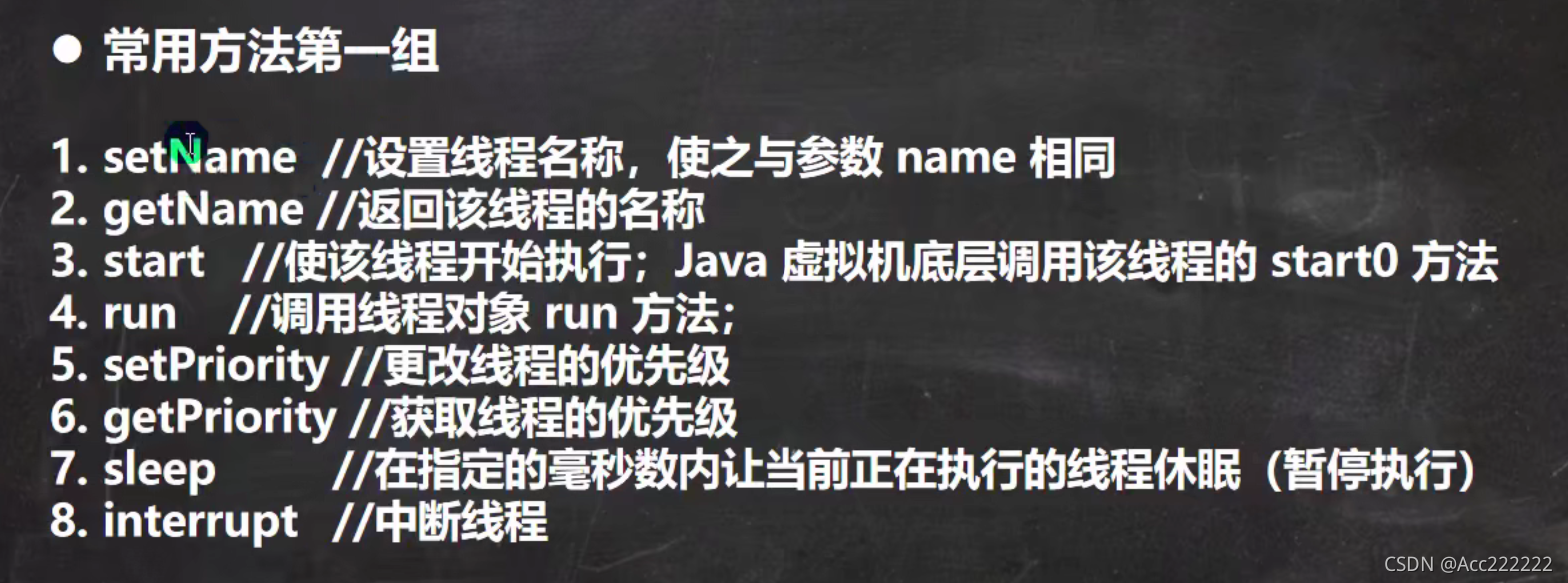
有几个需要注意的点:1. start底层(start0)会创建新的线程调用run,run只是一个普通方法,不会启动新线程。 2. sleep是静态方法。 3. 线程优先级的范围:
4. 重点理解 interrupt 唤醒线程(注意不是中断线程!):它并不会真正的结束线程,一般用于中断正在休眠的线程(相当于吵醒睡觉中的线程)。 InterruptedException就是用来接收 interrupt的。
class AA implements Runnable{private boolean loop = true;@Overridepublic void run() {while(loop){System.out.println("青眼白龙");try {Thread.sleep(10000); //休眠10秒} catch (InterruptedException e) {//InterruptedException是捕获到一个中断异常//当该线程执行到一个interrupt方法时,就会catch一个异常,可以加入自己的业务代码System.out.println(Thread.currentThread().getName() + "被interrupt了");}}}public void setLoop(boolean loop) {this.loop = loop;}}
Thread.currentThread().getName() 获取当前线程名
public static void main(String[] args) throws InterruptedException {AA aa = new AA();Thread thread = new Thread(aa);thread.start();Thread.sleep(3000);thread.interrupt(); //主线程休息3秒后吵醒线程}

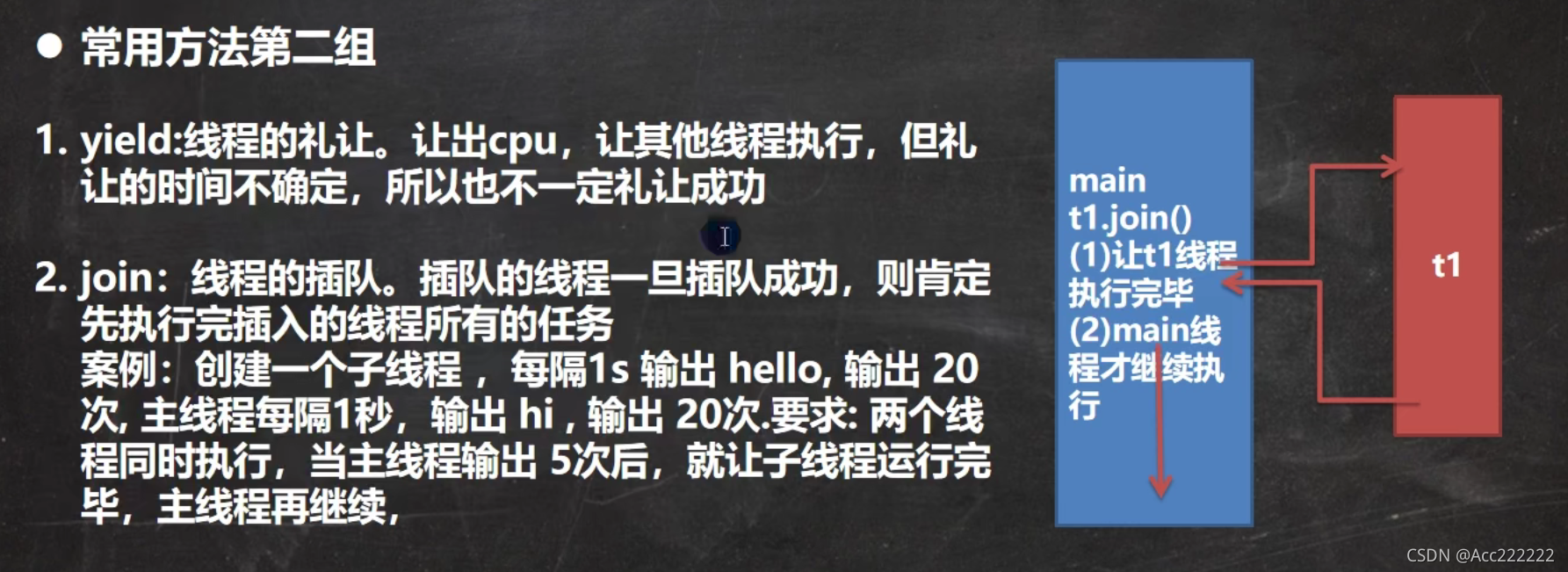
注:如果CPU资源充足,yield就不会成功,而join一旦调用,CPU就全力执行调用的线程,其它线程就停止了,所以一定成功。
public static void main(String[] args) throws InterruptedException {AA aa = new AA();Thread thread = new Thread(aa);thread.start();for(int i=0;i<100;i++){System.out.println("主线程执行第" + i +"次");if(i==10){thread.join(); //这时全力执行 aa对应的线程}}}
用户线程和守护线程

把一个线程设定成守护线程: 这样当其他用户线程都结束后,守护线程自动结束。
AA aa = new AA();Thread thread = new Thread(aa);thread.setDaemon(true); //将子线程设置为守护线程
线程的状态
原本线程的状态总共有六个,但是可以被细分成七个。 也就是 Runnable状态被分成了 Ready和Running两个状态。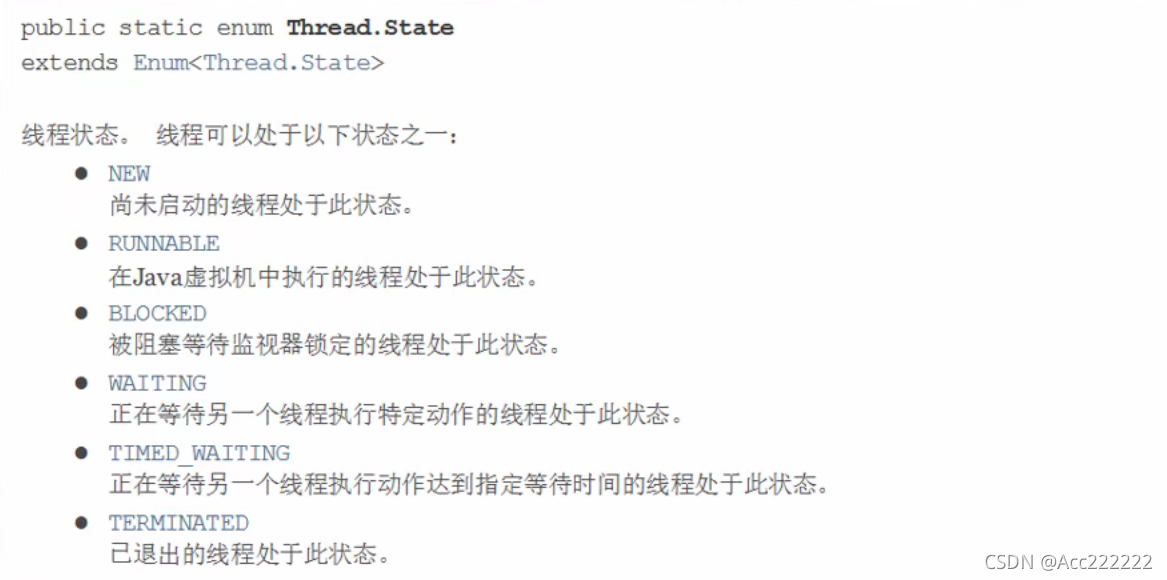

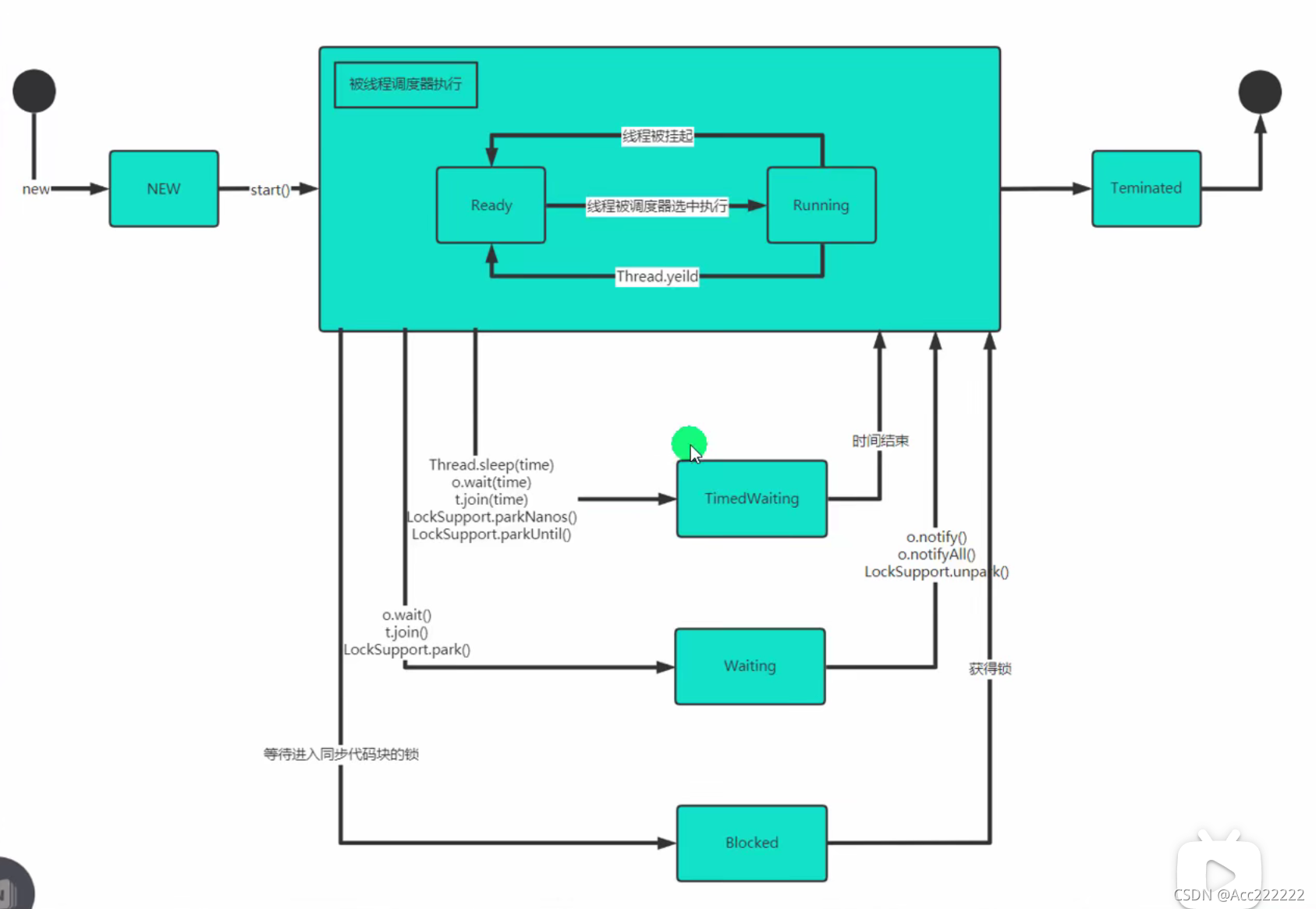

Synchronized
线程同步机制简介


可以理解为某人进厕所后把门关上(上锁),然后出来的时候剩下的人才能进去。
售票问题的解决
class AA implements Runnable{public static int TicketNums = 100; //共享票数private boolean loop = true;public synchronized void sell(){//把售票设为一个同步方法,这样每次只有一个线程访问if(TicketNums <=0){System.out.println("售票结束");loop = false;return;}try {Thread.sleep(50);} catch (InterruptedException e) {e.printStackTrace();}TicketNums--; //System.out.println("窗口 " + Thread.currentThread().getName() + "售出一张票"+ " 剩余票数:" + TicketNums);}@Overridepublic void run() {while(loop){ //持续贩卖sell();}}}
public static void main(String[] args) throws InterruptedException {AA aa = new AA();new Thread(aa).start();new Thread(aa).start();new Thread(aa).start(); //一个对象创造三个线程}
互斥锁
当一个方法设为synchronized,就相当于加了一把锁(如果锁在对象上那就是对象锁),t1,t2,t3会争夺这把锁。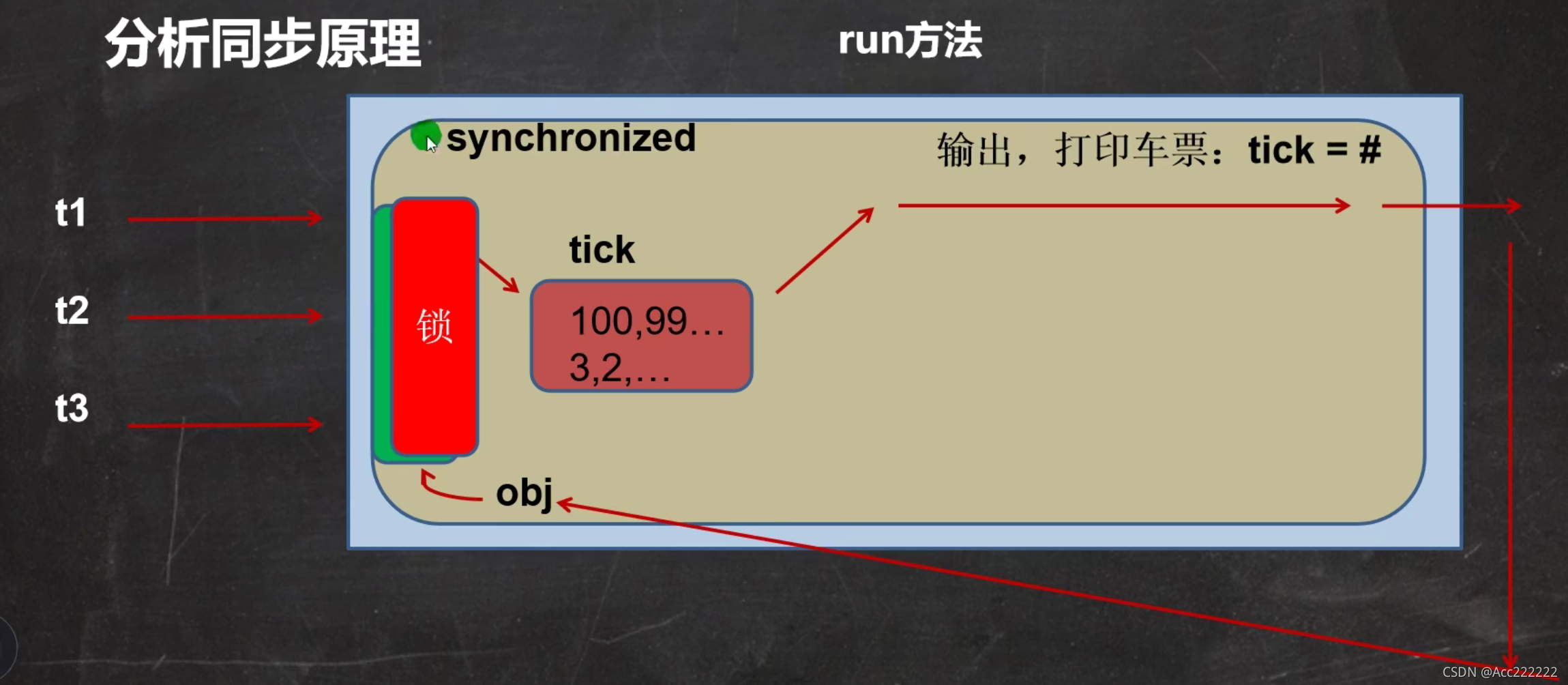
当一个线程争夺到时,锁会被打开,然后执行方法。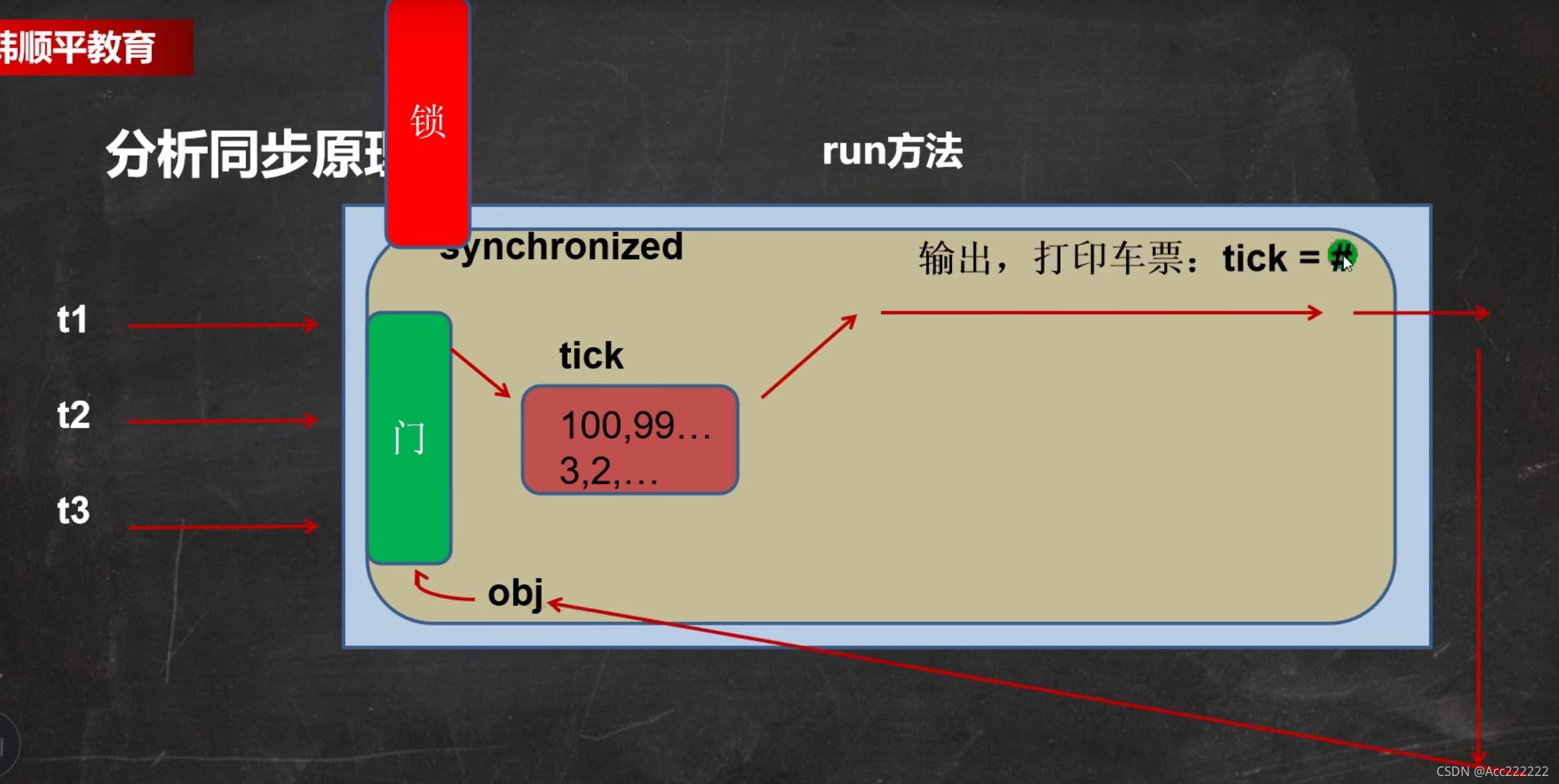
当方法执行完毕后,继续锁上,然后线程继续争抢。 

public synchronized void sell() {} 就是一个同步方法,此时锁在this对象上。 当然也可以在代码块上写synchronize,同步代码块,互斥锁还是this对象。
public void sell(){synchronized(this){ //同步代码块if(TicketNums <=0){System.out.println("售票结束");loop = false;return;}try {Thread.sleep(50);} catch (InterruptedException e) {e.printStackTrace();}TicketNums--; //System.out.println("窗口 " + Thread.currentThread().getName() + "售出一张票"+ " 剩余票数:" + TicketNums);}}
5. 非静态同步方法的锁可以是当前对象,也可以是其它对象(要求是同一个对象,比如Object)。
Object object = new Object();AA aa = new AA();BB bb = new BB();public void sell(){synchronized (object){ //只有object可以,父类(bb)和自己(aa)都不行//多个线程访问同一个对象if(TicketNums <=0){System.out.println("售票结束");loop = false;return;}try {Thread.sleep(50);} catch (InterruptedException e) {e.printStackTrace();}TicketNums--;System.out.println("窗口 " + Thread.currentThread().getName() +"售出一张票" + " 剩余票数:" + TicketNums);}}
6. 静态的同步方法的锁为当前类本身。
public static void m2(){synchronized (Test.class){ //不能写this了,要写 当前类名.classSystem.out.println("静态方法中的同步代码块");}}

有一个重点要说明的: 多个线程的锁对象应为同一个!
synchronized (this){...} //同步代码块 public synchronized void sell(){...} //同步方法
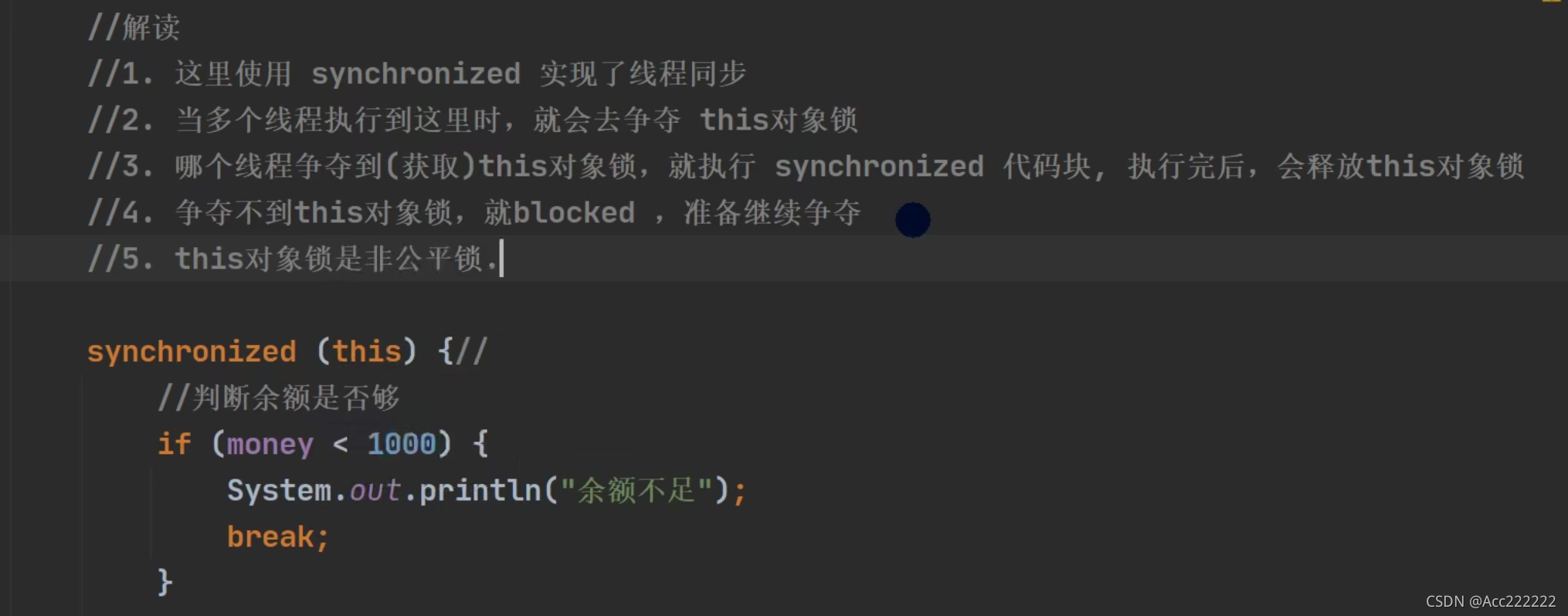
对于以上两种同步写法,所使用的对象都是this(也就是给this加了把锁),这样的写法对下面的主函数是有用的: 因为它们对应的都是一个对象,对应的方法也是同一个。
AA aa = new AA();new Thread(aa).start();new Thread(aa).start();new Thread(aa).start(); //一个对象创造三个线程
但是对于下面这种写法就不管用了:
AA aa1 = new AA();AA aa2 = new AA();AA aa3 = new AA();new Thread(aa1).start();new Thread(aa2).start();new Thread(aa3).start();
这里创建了三个不同的对象,因此它们的锁各管各的,相当于有三把锁,每个线程每次都能抢到锁。因此就不管用了。
线程死锁

比如: 妈妈:你先完成作业,才让你玩手机。 小明:你先让我玩手机,我才完成作业。
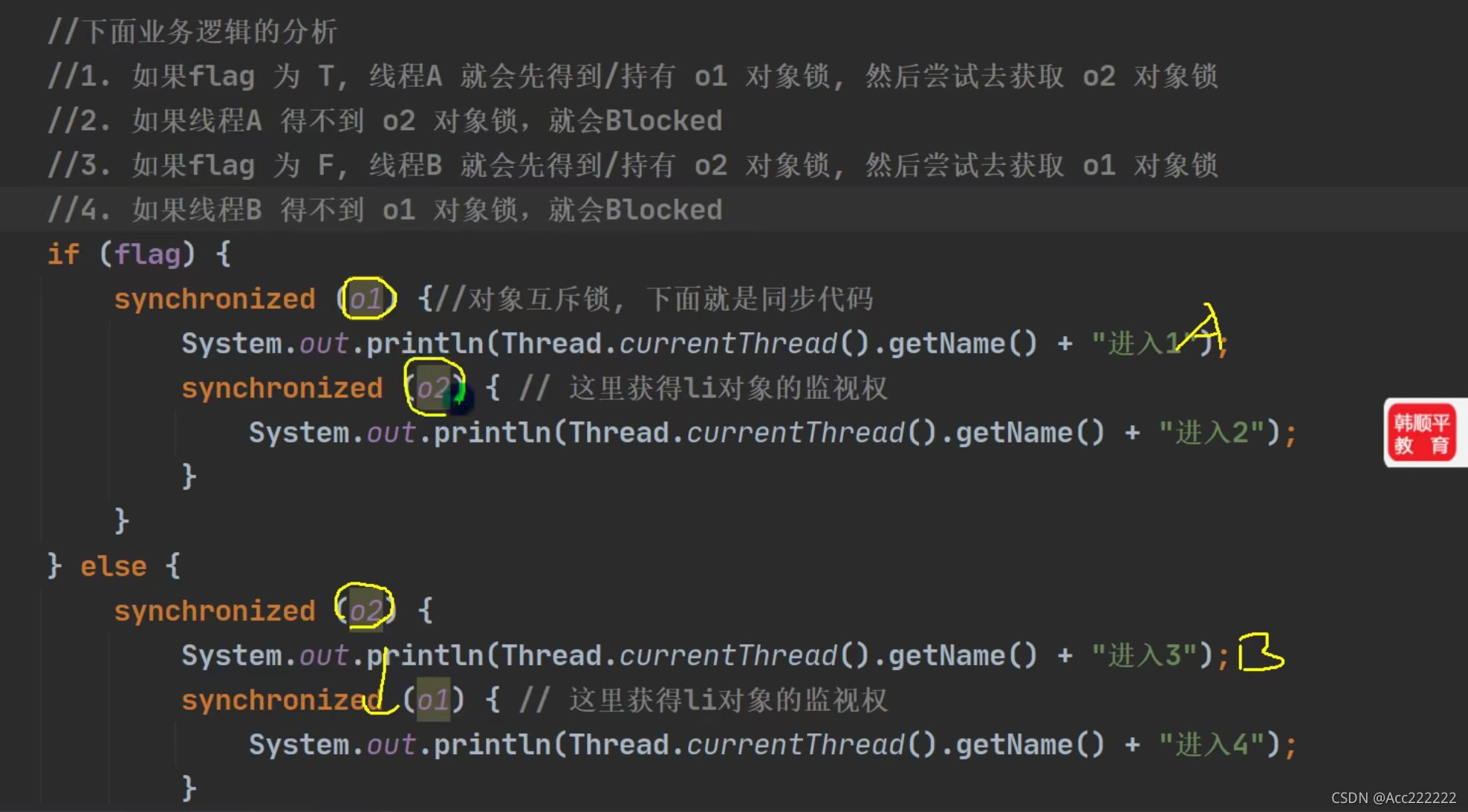
释放锁
释放锁:从 线程调度器中出来(线程状态图的绿色块)就释放了锁,如果没有出来就是没有释放



